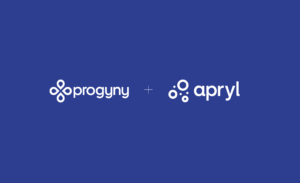We have continued our Bold&Beyond by Apryl event series in the new year to discuss exciting topics that are on the minds of today’s HR leaders. In order to reflect diversity not only in our company but also in our events, this time the event had the motto “Jaisalmer ” – an Indian desert festival in the city Jaisalmer celebrating the wonderful culture and traditions of the locals. Over a delicious Mumbai Mule, our speakers and participants talked about benefits trends and new opportunities that not only make employees happy, but actively support the workforce in current times.
Due to the tragic events in the Ukraine, unfortunately not all participants were able to join. Many of them had to find solutions to support their staff in Ukraine at short notice. At this point, we can only express our appreciation to all those HR leaders who always put their employees first in these exceptional situations and support them in the best possible way by relocating them to other countries, providing mental support or offering the greatest possible flexibility.
Deciding on the right employee benefits strategy
In a small and intimate setting, we were nevertheless able to discuss great benefits strategies for 2022 and engage in a valuable, direct exchange on a wide range of employee-related experiences. Noor van Bovens, founder of INVESTED and former CHRO of N26, moderated through the evening and introduced our exciting speakers Isha Smith, Compensation and Benefits Manager at Soundcloud and Giulia Cirella, Total Rewards Partner at Personio.
Noor started the conversation with the results of a recent Glassdoor study that shows that 80% of employees rather have a rich benefit offering that is tailored to their individual needs and preferences instead of just a good salary increase. A very clear result that demonstrates how important a matching benefit offer has become these days.
Since the start of Covid, we could see a shift in what employees want from businesses, said Giulia. It is not only about health insurance or free food anymore – employees have different needs and companies need to be flexible to make the whole pool of employees happy. As most companies, especially in tech, implemented remote work policies, it is important they also offer their benefits anywhere in the world and make them relevant to a diverse workforce.
The question was then raised as to how to decide on the right benefit strategy. “Should you ask employees what they want or define the offer yourself according to how you want to be perceived as a company and what values you represent?”, asked Noor.
3 steps to creating an employee benefits strategy
Both Isha and Giulia agreed that it is important to start with an analysis and evaluation of the available data first. Once all the relevant data has been analyzed and you have a good overview of the current situation, Giulia recommends the following strategy based on her experiences:
- Create awareness – most employees don’t even know what benefits their company actually offers. Make sure they are informed about the current offering, e.g through regular newsletters, their supervisors or company updates.
- Check relevance – roughly 30% of the offered benefits are actually relevant for the employees. You can work with different surveys or focus groups to find out what your workforce actually needs.
- Ensure utilisation – only around 50% of the exciting benefits were utilised. When your employees are aware of the exciting benefits and they are relevant for them, make sure to send out reminders through e.g. a monthly newsletter or an internal page so they won’t forget to use them.
Review and adapt benefits for future trends
“Always focus on quality over quantity when it comes to benefits!” – Giulia adds. You don’t need ten benefits around the same topic that are all not great, rather focus on a few really relevant ones. To constantly check your existing benefits for relevance, you should run regular engagement surveys and make changes when necessary.
“Recognising current trends is also an important aspect of a functioning strategy”, said Isha. Especially with regard to the “great resignation”, we have to consider social wellbeing in addition to physical, financial or mental wellbeing measures and ensure that all employees have enough social connections despite the pandemic.
This also includes enough time off. Giulia shared that her previous employers LinkedIn and Delivery Hero, both gave Friday afternoons off in the summer. Isha added that company-wide close days to give employees the breaks they needed were also really appreciated at Soundcloud.
Implement an employee value proposition
“There has always been a disconnect between what companies think is important to employees vs. what employees think is important and valuable”, mentioned Isha. So you need to find that sweet spot in between, ideally through an Employee Value Proposition. For an overall positioning, the current market offer should also be explored in order to consider the differences in requirements between countries. In addition, the benefits should reflect the unique culture of the respective company and thus attract the talent that the company is looking for.
Employee benefits don’t have to be big budget
With all that talk about new benefits, there came the inevitable question on whether companies just need to expect higher budgets for their employee benefits overall. And the answer was yes. But then how do you get your CFO on board with this? In Isha’s experience, this is where data comes in. If you can clearly show what employees want and what the ROI looks like, it’s a much easier discussion. It also doesn’t always have to be expensive – many offers can also be implemented with simple policy changes, a small budget and existing providers.
Another topic that came up was the concept of a ‘flexible benefits budget’ which employees can use individually as a ‘pick and choose’ option. Everyone agreed that this is a great way to make the benefits package as inclusive as possible, since people can decide whether to spend their budget on public transportation, child or elderly care, fertility or just a gym membership. However, according to some participants, the effort involved in this setup is enormous and cannot be managed without the support of a provider in the long run. Especially not if it is to be offered on an international level.
We’ll keep exploring these topics and will host the next BOLD & BEYOND session soon. So, if you feel like sharing your own experiences, please reach out to us directly. We’ll also share more learnings and insights from the event within the next weeks – so stay tuned and follow us on Linkedin.
If you want to learn more about offering fertility benefits as part of your employee benefits package and how this can make you a more inclusive employer, then why not get in touch?
General advice posted on our blog or website or app is for informational purposes only and is not a substitute for medical advice, diagnosis, or treatment. Apryl makes no warranties regarding treatments, coverage, or chances of success.




